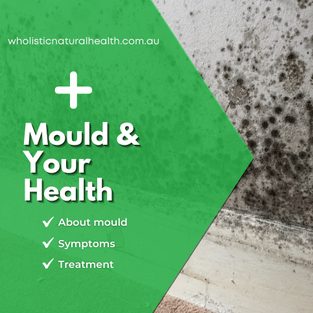
Mould Diagnosis and Treatment Guide for Health and Home
Mould effects on health are often overlooked, yet toxic mould is a hidden root cause that can lead to hormonal imbalances, neurological disorders, chemical imbalances, chronic gastrointestinal problems, various autoimmune diseases and more. Did you know that mould is found in roughly 70% of homes and approximately 28% of people (1 in 4 people) have the HLA-DR gene, making them genetically prone to toxic mould-related health issues due to difficulties in naturally detoxifying mould and mycotoxins?
So in this blog, we cover the effects of toxic mould on health, exploring the different types of mould, prevention strategies, symptoms of mould illness, risk factors, and available diagnosis and treatment options. Discover how to protect yourself and your loved ones from the unseen dangers of mould.
Understanding Mould: Top Types and Growth Conditions
Mould is commonly found in both commercial and residential buildings because many building materials contain nutrients that actually promote its growth. It thrives in moist environments and can develop within 24-48 hours after water damage, growing on a variety of surfaces and materials.
There are over 100,000 types of mold that can be found indoors and outdoors, with 37 being more commonly encountered. The top five most prevalent indoor molds are Penicilium, Fusarium, Stachybotrys, Aspergillus and Cladosporium. Mould can appear in a range of colors, including brown, purple, orange, pink, yellow, red, white, or various shades, although the most common colors are black, grey, or green. The color of mold does not determine its toxicity, despite the belief that black mold is always toxic. Some molds that are not black can also produce toxins and be harmful.

Large mould infestations may typically be seen or smelled because they have a musty odour, although they are not always visible because mould can dwell in wall cavities.
Many individuals mistakenly believe that mold can be eliminated by painting over it or using bleach, but this is not true. Mold is a sign of underlying moisture problems that must be resolved, as it will persist and spread if not properly addressed. Inhaling mold spores can also result in mold developing internally in the body. Therefore, even if one moves to a new residence, mold spores may still be present in the body and furniture.
Health Risks: The Hidden Dangers of Toxic Mould
Toxic mould is more than an unsightly presence; it’s a serious health hazard. It releases mycotoxins that can trigger allergies, cause irritation, weaken the immune system, and lead to a range of health issues often misdiagnosed as other illnesses. Affecting 1 in 4 people, mould can cause undiagnosed “mystery illnesses,” commonly seen in those with chronic fatigue.
Individuals with allergies, lung diseases, or weakened immune systems are more vulnerable to mould-related health problems. Small children, the elderly, and those with compromised immune systems are particularly at risk. Awareness of these factors can help in taking timely preventive measures.
Signs and Symptoms of Toxic Mould Exposure
These are common symptoms of toxic mold exposure but vary greatly from person to person.
- Respiratory Difficulties
- Coughing
- Nasal Stuffiness
- Discoloured or Irritated Eyes
- A Sore Throat
- Skin Rashes
- Chemical Sensitivities
- White Spots on Skin
- Smells, Lights, Noises
- Memory Loss
Preventing & Reducing Mould Growth in the Home
Mould growth can be avoided if humidity levels are kept below 50%. However, that means that the weather can play a massive role for certain countries to be more inclined to have a problem. Australia for instance is affected by humidity a lot and has frequent floods in certain regions so mould toxicity can be a massive problem here.
To reduce the risk of mould growth and its associated health effects, follow these key strategies:
- Ventilation: Keep air moving in your home to reduce moisture. Ensure proper ventilation in kitchens, bathrooms, and laundry areas. Opening windows slightly and using ceiling fans can help.
- Essential Oils: Diffuse our essential oils to stop spore production and spread, thanks to their antifungal properties.
- Food Storage: Avoid storing mould-loving foods for long periods. Discard mouldy food entirely to prevent spore spread and reduce health risks. For instance if you find mould on food like bread, it’s best to throw it out rather than just cutting off the mouldy piece.
By maintaining low humidity, ensuring good ventilation, using essential oils, and being mindful of food storage, you can significantly reduce the risk of mould growth.
Toxic Mould Diagnosis and Treatment for Home and Body
Identifying and Treating Mould-Related Health Issues
Suspect mould illness? It’s crucial to get a proper diagnosis. Consult with a qualified mould toxicity practitioner, like us, who can assess both you and your home. For more information, take our free root cause health analysis for mind and body health—available worldwide with no strings attached.
We specialize in identifying the underlying causes of your health issues. If mould is identified as a health problem, we provide free advice on healing both your body and home, guiding you through the necessary steps to reclaim your health and well-being.
Identifying and Removing Mould in the Home, Business, or Environment
As recognized and qualified mould toxicity practitioners, we work in collaboration with San Air to address mould toxicity in both the body and home. Our comprehensive approach ensures thorough healing, recovery, and removal, along with effective prevention strategies.
San Air specializes in removing mould from homes, conducting detailed mould testing to ensure a safe and mould-free living environment. Their expertise complements our health programs, providing a complete solution for both your home and your body.
Treatment
Reach Out for a Healthier Future
Embark on your journey to health with our innovative solutions and expert advice on mould treatment and prevention. Get in touch to learn more about our holistic approach to mould remediation and to explore our range of products, services and health programs designed to restore and maintain your well-being.
We hope that you enjoyed your our mould diagnosis and treatment guide. Please let us know your thoughts in the comments and share with friends and family who might benefit from reading this!
Want more info on mold toxicity and mould effects on health? Check out our other blogs under the category Mould Toxicity Support or listen to our podcast episode What is Mold toxicity? Where our lead practitioner Magic Barclay talks more about her own experience of mould toxicity and goes into depth about all the symptoms and also ways to reduce mold exposure.




Im keen to learn about your products
Thanks Debbie for getting in touch. We will send you an email with more information shortly.